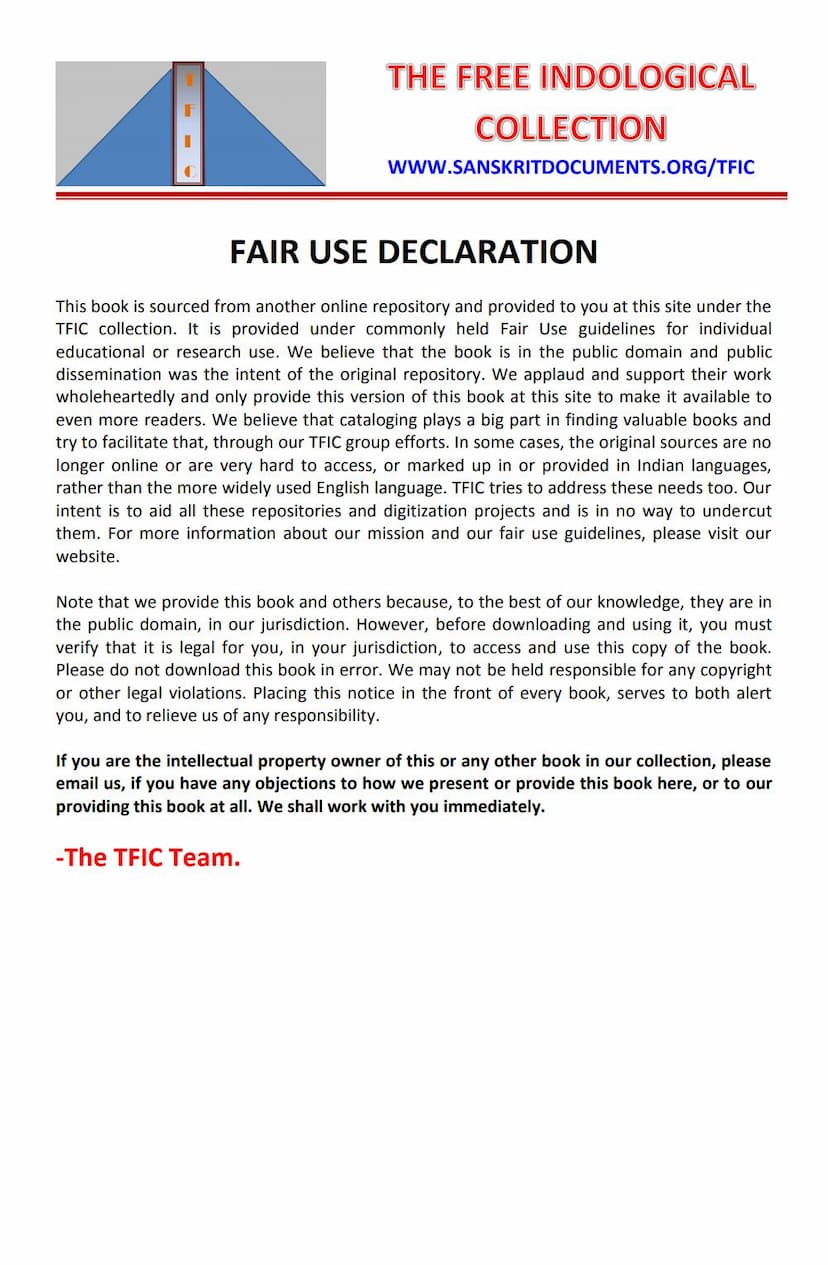World Of Jainism
Added to library: September 2, 2025

Summary
This book, "The World of Jainism" edited by Vishvanath Pandey, is a collection of essays aiming to provide a comprehensive account of Jainism, covering its history, art, literature, philosophy, and religion. The foreword by Shriyans Prasad Jain acknowledges the scholarly exposition of the editor and other contributors, while also pointing out some potential "misconceptions" regarding specific Jaina concepts.
The book is structured with an Introduction by the editor, followed by articles on various facets of Jainism:
- Jainism - A Familyhood of all Religions by Kaka Saheb Kalelkar, who frames Jainism within the broader context of Indian religious tolerance and synthesis, drawing parallels with Mahatma Gandhi's concept of "Sarvadharma Samabhava" (equality of all religions). He highlights Jainism's core principles of Ahimsa and Anekanta-vada as contributing to this inclusive spirit.
- From Risabha to Mahavira by Dr. M. D. David, which traces the history of Jainism from its first Tirthankara, Rishabhadeva, to the 24th and last, Mahavira. It places Mahavira within the socio-religious context of the 6th century BC, a period of religious ferment, and discusses the lineage of Tirthankaras and their teachings.
- Glimpses of Southern Jainism by John Ezekiel Chalıl, explores the significant presence and influence of Jainism in South India, particularly in Tamil Nadu and Karnataka. It notes its early penetration and its contribution to literature and culture, mentioning its prevalence even before Vedic traditions became dominant in the South.
- Life and Culture in Jaina Narrative Literature (8th, 9th and 10th Century A.D.) by Prof. A. S. Gopani, delves into the rich narrative literature of Jainism. It highlights how these stories, written in Prakrit and later Sanskrit, provide insights into the daily life, customs, beliefs, and social structures of the time, often incorporating supernatural elements to convey moral lessons.
- Position of Women in Jaina Literature by Dr. A. S. Gopani, analyzes the portrayal of women in Jaina narrative literature, describing their roles as brides, wives, mothers, nuns, and even prostitutes, while also discussing their education and social standing.
- Evolution of Jaina Thought by Risabhdas Ranka, discusses the historical and philosophical evolution of Jainism, contrasting it with Vedic culture and highlighting the shared emphasis on asceticism and non-violence. It explores the potential pre-Aryan origins of Jainism and its connections with concepts in Hinduism.
- Jaina Philosophy and Religion by Dr. Vishvanath Pandey, provides a detailed overview of Jaina philosophy, covering its epistemology (sources of knowledge), logic (Nayavada, Syadvada), metaphysics (Jiva, Ajiva, substances), psychology (mind, senses), ethics (Karma, vows, Gunasthana), and its stance on God. It emphasizes Jainism's dualistic and pluralistic nature, its rigorous ethical code, and its concept of liberation.
- Jainism and Modern Life by C. C. Shah, examines the relevance of Jainism's ethical principles, particularly Ahimsa, Aparigraha, and Anekantavada, in contemporary society. It discusses the potential contradictions and practical limitations of extreme asceticism and the need for re-interpreting these principles for modern application, referencing figures like Mahatma Gandhi and Albert Schweitzer.
- The Great Renunciation by Dr. H. D. Sankalia, focuses on the dramatic renunciation of Neminatha, the 22nd Tirthankara, as depicted in Jain literature and art, particularly the ceiling panels at the Lunavasahi temple on Mount Abu.
- Jaina Contribution to Indian Art by Dr. Umakant P. Shah, highlights Jainism's substantial contribution to Indian art and architecture, tracing its development from early cult images and cave inscriptions to sculptures, metal images, and temple architecture, showcasing the influence of various periods and regions.
- Early Metal Images of the Jainas by Sadashiv Gorakshkar, provides a specialized study of Jaina metal iconography, discussing early bronze images from sites like Chausa, Vala, and Akota, and their stylistic evolution under different periods and regional influences.
- Bibliographical Aids for the Study of Jainism by Urmi Bhagwati, offers a comprehensive list of bibliographies, indexes, and periodicals that are essential resources for researchers and students of Jainism, acknowledging the need for further development in this area.
The book aims to present Jainism as a significant and integral part of Indian civilization and culture, underscoring its philosophical depth, ethical rigor, and artistic achievements. It also touches upon the historical context of its development and its enduring presence in India.